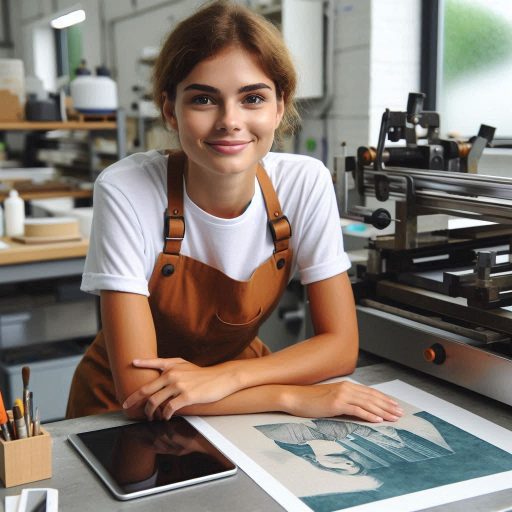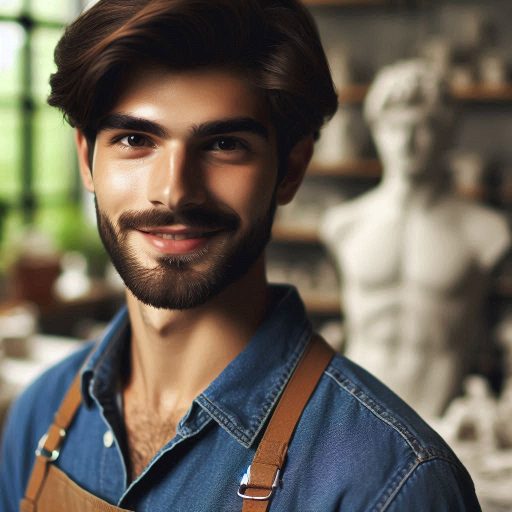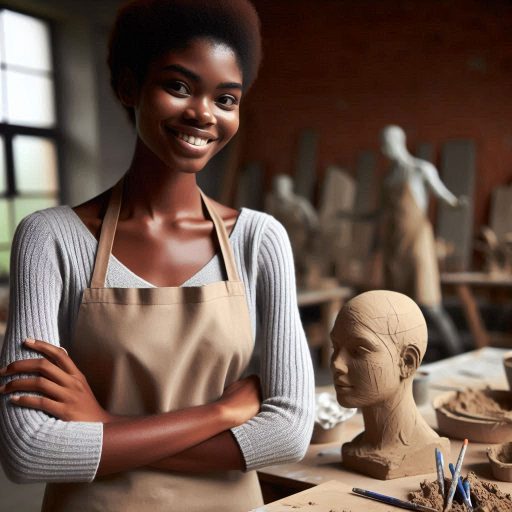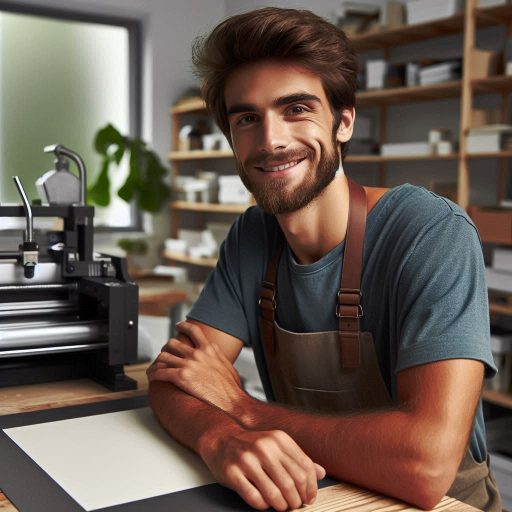Introduction
Sculpture has always been a vital form of artistic expression.
Artists have used various techniques to transform raw materials into evocative works.
From ancient civilizations to today, sculpture techniques have evolved significantly.
This evolution showcases human creativity and technological advancement over centuries.
Traditional sculpture techniques have deep historical roots.
Ancient sculptors carved figures from marble, stone, and wood.
They used tools like chisels and mallets to achieve their vision.
These techniques required immense skill and patience, emphasizing detail and precision.
Classical Greek and Roman sculptures are prime examples of this craftsmanship.
Their works often depicted gods, heroes, and historical figures in elaborate, realistic forms.
In contrast, modern sculpture techniques embrace innovation.
The 20th century introduced new materials and methods.
Sculptors began using metals, plastics, and even found objects in their works.
Techniques like welding and casting allowed for more abstract forms.
Artists like Pablo Picasso and Marcel Duchamp pushed boundaries, blending different mediums and concepts.
Today, contemporary sculptors continue to experiment.
Digital tools and 3D printing have revolutionized the field.
Artists now create complex structures that were once impossible to achieve.
The use of virtual reality and interactive installations further expands the definition of sculpture.
This progression from traditional to modern techniques highlights the dynamic nature of art.
Transform Your Career Today
Unlock a personalized career strategy that drives real results. Get tailored advice and a roadmap designed just for you.
Start NowEach era builds upon the last, reflecting changes in society, technology, and artistic vision.
Sculpture techniques have continuously evolved, mirroring the growth of human creativity and technological advancement.
Understanding this evolution provides insight into the diverse approaches to sculpting.
It underscores how artists adapt and innovate, reflecting both historical contexts and future possibilities.
Traditional Sculpture Techniques
Overview of traditional sculpture techniques such as carving, modeling, and casting
Carving is a technique where the sculptor removes material from a solid block to reveal the desired form.
This method requires precision and skill to create intricate details.
Modeling involves shaping and manipulating a pliable material, such as clay or wax, to create the sculpture.
This technique allows for more freedom in creating organic forms.
The use of tools like chisels, hammers, and molds in traditional sculpting
Casting is the process of creating a sculpture by pouring a liquid material, such as bronze or plaster, into a mold.
Once the material hardens, the mold is removed to reveal the finished piece.
Tools used in traditional sculpting include chisels, hammers, and molds.
Chisels are used to carve and shape the material, while hammers help to break off excess material.
Molds are used in casting to create multiple replicas of the sculpture.
Examples of famous traditional sculptures
Famous traditional sculptures include Michelangelo’s David, Rodin’s The Thinker, and Bernini’s Apollo and Daphne.
These works showcase the skill and mastery of traditional sculpture techniques.
In fact, traditional sculpture techniques have stood the test of time and continue to be revered in the art world.
The use of tools like chisels, hammers, and molds, combined with the artistic vision of the sculptor, results in timeless masterpieces that inspire awe and admiration.
Read: Understanding Printmaking Editions and Proofs
Modern Sculpture Techniques
Contemporary sculptors have embraced a range of innovative techniques, pushing the boundaries of traditional methods.
Let’s explore some of the exciting modern sculpture techniques that have emerged in recent years.
Transform Your Career Today
Unlock a personalized career strategy that drives real results. Get tailored advice and a roadmap designed just for you.
Start NowAssemblage
One of the key techniques in modern sculpture is assemblage, where artists create sculptures by combining different found objects and materials.
This approach allows for a mix of textures, shapes, and colors that traditional sculpting methods cannot achieve.
Assemblage sculptures often have a dynamic and eclectic quality, as artists play with the contrast and juxtaposition of various elements.
This technique encourages creativity and resourcefulness, as artists repurpose everyday objects in unexpected ways.
Installation
Installation art has become a popular form of modern sculpture, blurring the lines between sculpture and environment.
Artists create large-scale, immersive installations that transform physical spaces and engage viewers in a multi-sensory experience.
Installation sculptures often incorporate light, sound, and interactive elements, turning ordinary settings into immersive, otherworldly environments.
This technique challenges traditional notions of sculpture as standalone objects, inviting viewers to explore and interact with the artwork in new ways.
Digital Sculpting
Advancements in technology have revolutionized the field of sculpture, with digital sculpting tools enabling artists to create complex and intricate forms with precision and ease.
Digital sculpting software allows artists to sculpt virtual models in 3D space, manipulating shapes, textures, and proportions with unprecedented accuracy.
This technique opens up a world of possibilities for sculptors, allowing them to experiment with new forms and techniques that were previously impossible to achieve by hand.
Digital sculpting blurs the boundaries between traditional craftsmanship and cutting-edge technology, expanding the creative horizons of modern sculptors.
Use of New Materials and Technology
Modern sculptors are embracing a wide range of new materials and technologies in their practice, from industrial metals and plastics to organic materials like wood and clay.
These materials offer unique textures, colors, and properties that inspire artists to experiment and push the boundaries of traditional sculpture techniques.
Additionally, technological advancements such as 3D printing and CNC milling have revolutionized the way sculptures are made, allowing artists to create intricate and complex forms with speed and precision.
By incorporating new materials and technologies into their work, modern sculptors are creating innovative and dynamic artworks that challenge our perceptions of what sculpture can be.
In short, modern sculpture techniques have evolved to embrace a diverse range of approaches, from traditional methods like assemblage to cutting-edge technologies like digital sculpting.
By pushing the boundaries of materials, techniques, and technologies, contemporary sculptors are creating innovative and dynamic artworks that challenge conventional notions of sculpture and inspire new ways of thinking about art.
Read: Famous Sculptors: Inspiration and Their Iconic Works
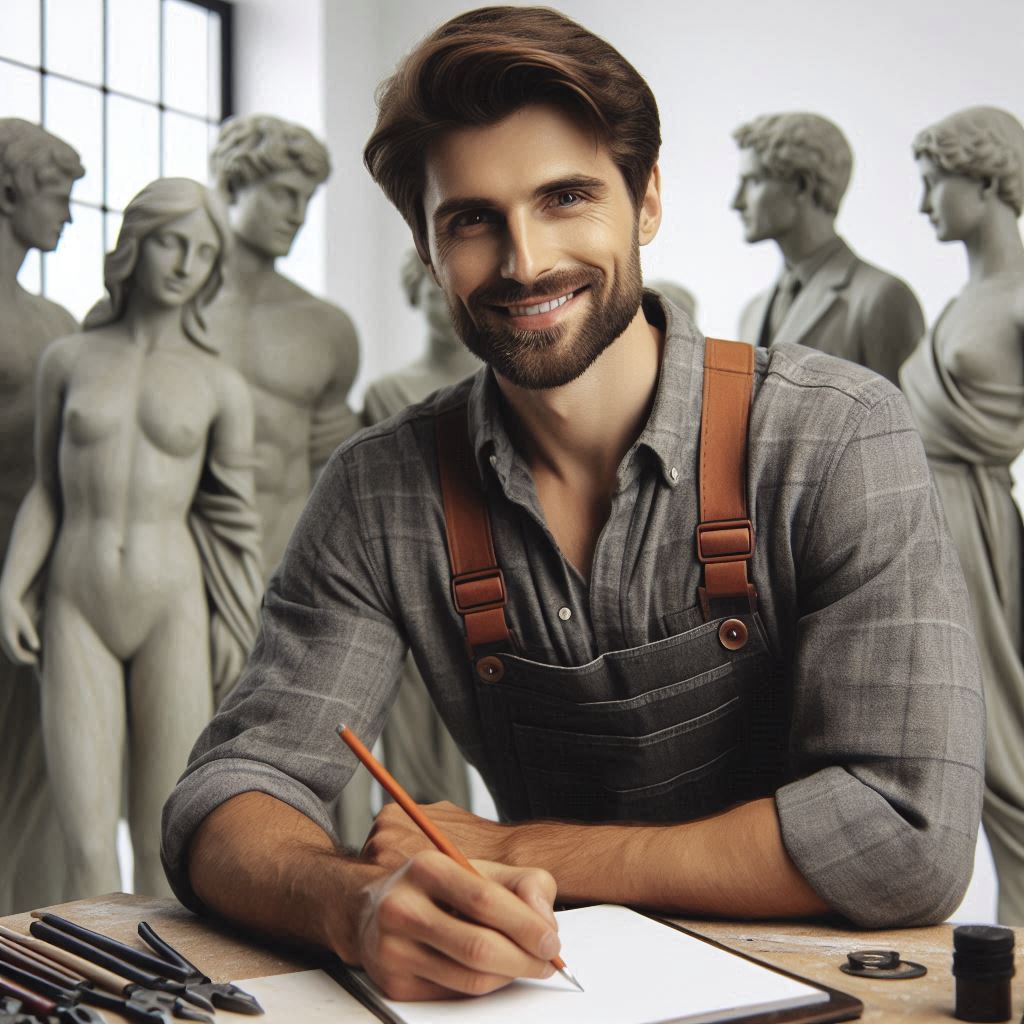
Fusion of Traditional and Modern Techniques
One of the most fascinating aspects of the art world is the fusion of traditional and modern sculpting techniques.
Transform Your Career Today
Unlock a personalized career strategy that drives real results. Get tailored advice and a roadmap designed just for you.
Start NowMany artists today are breaking boundaries and exploring new ways to create meaningful and innovative pieces that resonate with audiences.
By combining elements from both traditional and modern sculpting styles, these artists are able to push the boundaries of what is possible and create pieces that are truly unique and captivating.
Blending Traditional and Modern Techniques
One way artists blend traditional and modern techniques is by using traditional materials such as wood, stone, or metal, but incorporating modern tools and technology to shape and manipulate the material.
This allows for greater precision and detail in the finished piece, while still retaining the timeless quality of traditional sculpting methods.
For example, a sculptor might use a 3D printer to create intricate parts of a sculpture, then manually carve and shape the final piece using traditional tools.
Examples of Sculptures Combining Traditional and Modern Elements
One striking example of a sculpture that combines traditional and modern elements is the work of artist Ron Mueck.
Mueck’s hyperrealistic sculptures often depict human figures in various states of emotion and vulnerability.
He uses traditional sculpting techniques to create lifelike forms, but his use of scale and attention to detail give his pieces a modern and almost surreal quality.
Another example is the work of artist Arlene Shechet, who combines traditional ceramic techniques with unconventional materials and modern design principles to create abstract and visually arresting sculptures.
Innovation and Creativity in Merging Sculpting Styles
When artists merge different sculpting styles, it opens up a world of possibilities for innovation and creativity.
By blending traditional and modern techniques, artists can create pieces that challenge traditional notions of what sculpture can be.
This fusion of old and new allows artists to tap into their creativity and push the boundaries of their craft, resulting in truly dynamic and captivating works of art.
The juxtaposition of traditional and modern elements in sculpture also serves to spark conversation and provoke thought, as viewers are forced to consider how these seemingly disparate styles can coexist in harmony.
In essence, the fusion of traditional and modern sculpting techniques represents a bold and exciting direction in the world of art.
By combining elements from different stylistic traditions, artists are able to create pieces that are visually stunning, emotionally resonant, and intellectually stimulating.
This blending of old and new not only showcases the versatility and adaptability of the art form but also underscores the power of creativity and innovation in the hands of skilled artists.
Read: Printmaking Residencies and Scholarships
Importance of Learning Sculpture Techniques
Why it is essential for sculptors to learn a variety of techniques
Sculptors benefit greatly from learning a variety of techniques.
Mastering multiple methods opens doors to diverse artistic possibilities.
Each technique offers unique ways to shape and define materials.
Transform Your Career Today
Unlock a personalized career strategy that drives real results. Get tailored advice and a roadmap designed just for you.
Start NowBy understanding different approaches, sculptors can find the best method for their vision.
Learning various techniques also enhances an artist’s creativity.
For example, combining traditional carving with modern methods can lead to innovative results.
A sculptor proficient in both additive and subtractive techniques can experiment with more complex designs.
This versatility enables artists to push the boundaries of their craft.
How mastering different techniques can enhance an artist’s creativity and versatility
Different techniques impact the final artwork significantly.
The choice of technique influences the texture, form, and overall appearance of the sculpture.
For instance, clay modeling allows for detailed, intricate forms, while stone carving produces more solid, permanent results.
Each method leaves its mark on the piece and reflects the artist‘s intent.
The impact of the technique on the final artwork and the artist’s artistic expression
Technique also affects the artist’s expression.
Mastery of techniques enables artists to convey their ideas more clearly.
An artist familiar with various methods can choose the most effective technique to express specific emotions or concepts.
This skill contributes to more profound and impactful artistic statements.
In a nutshell, learning sculpture techniques is crucial for any sculptor.
It not only enhances creativity and versatility but also influences the final artwork and artistic expression.
Embracing a range of techniques enriches the sculptor‘s practice and expands their artistic potential.
Read: Collaborative Projects in Printmaking
Sculpture Techniques in Different Cultures
Sculpture techniques reveal a rich tapestry of cultural diversity across the globe.
Each culture has unique methods, tools, and materials that reflect its history and values.
How Sculpture Techniques Vary Across Different Cultures and Regions
Different cultures use diverse techniques to create sculptures, shaped by their environment and materials.
Transform Your Career Today
Unlock a personalized career strategy that drives real results. Get tailored advice and a roadmap designed just for you.
Start NowIn Europe, classical sculpture often employs marble and bronze.
Asian cultures, such as those in India and China, use techniques like lost-wax casting and intricate wood carving.
In contrast, African sculpture often utilizes wood, ivory, and metal, with a focus on stylized forms.
The Unique Techniques Used in Cultures like African, Asian, and Indigenous Art
African sculptors traditionally carve wooden figures with simple, expressive forms.
They emphasize spiritual and ritualistic significance.
Asian sculptors in Japan and India use intricate techniques like relief carving and bronze casting to produce detailed and symbolic artworks.
Indigenous Australian artists create sculptures from natural materials such as wood and bark, often incorporating traditional symbolism.
How Cultural Influences Shape and Inform Sculpting Practices Around the World
Cultural influences heavily shape sculpting practices.
In African art, spiritual beliefs and communal rituals influence design and material choice.
Asian sculptors reflect religious and philosophical ideas, seen in the detailed representations of deities and symbolic animals.
Indigenous cultures embed their connection to the land and ancestors into their artworks, using local materials and traditional methods.
Each culture‘s unique approach to sculpture enriches the global art landscape, offering varied perspectives and techniques.
Understanding these diverse sculpting methods highlights the deep connection between culture and art.
Each technique not only reflects artistic expression but also cultural identity and values.
See Related Content: Top Skills Needed for a Successful Product Designer
Delve into the Subject: Salary Expectations for Industrial Designers in 2024
Future Trends in Sculpture Techniques
Predicted Future Trends in Sculpture Techniques
As the world of art continues to evolve, so do sculpture techniques.
Artists are constantly pushing boundaries and exploring new ways to express their creativity.
Here are some potential advancements and trends we can expect to see in the future:
Integration of Technology
One of the most exciting trends in sculpture is the integration of technology.
Transform Your Career Today
Unlock a personalized career strategy that drives real results. Get tailored advice and a roadmap designed just for you.
Start NowAdvancements in 3D printing and digital design software have already started to revolutionize the way sculptures are created.
In the future, we can expect to see even more innovative uses of technology in the sculpting process.
Exploration of New Materials
Traditional sculpture materials like clay, stone, and metal will always have a place in the art world.
However, artists are increasingly exploring new and unconventional materials to create their sculptures.
From recycled plastics to living organisms, the possibilities are endless.
In the future, we can expect to see a continued exploration of materials that challenge traditional notions of sculpture.
Emphasis on Environmental Sustainability
As climate change and environmental issues become more pressing, artists are increasingly turning to sustainable practices in their work.
In the future, we can expect to see sculptors placing a greater emphasis on environmental sustainability in their techniques.
This may include using eco-friendly materials, minimizing waste, and creating sculptures that raise awareness about environmental issues.
Collaborations with Scientists and Engineers
Collaborations between artists, scientists, and engineers have the potential to produce truly groundbreaking sculptures.
By working together, these interdisciplinary teams can create sculptures that blend artistic expression with scientific innovation.
In the future, we can expect to see more collaborations that push the boundaries of what is possible in sculpture techniques.
Continued Evolution and Experimentation
Ultimately, the future of sculpture techniques will be defined by artists’ willingness to evolve and experiment.
As new technologies, materials, and ideas emerge, sculptors must be open to trying new techniques and pushing the limits of their creativity.
In the coming years, we can expect to see sculptors continuing to evolve and innovate, creating works that challenge and inspire audiences around the world.
Uncover the Details: How to Create a Furniture Design Portfolio
Conclusion
After exploring various sculpture techniques from traditional to modern, it is evident that artists have evolved their practices over time.
Understanding these techniques is crucial as it allows for a deeper appreciation of the art form and the artist’s creative process.
By learning about different sculpting methods, one can recognize the diversity and innovation present in the world of sculpture.
From carving and modeling in traditional techniques to welding and 3D printing in modern practices, the possibilities are endless.
Transform Your Career Today
Unlock a personalized career strategy that drives real results. Get tailored advice and a roadmap designed just for you.
Start NowEmbracing the rich history and continuous development of sculpture techniques can inspire artists and art enthusiasts alike.
It is important to acknowledge the cultural significance and technical skills required in various sculpting methods.
Exploring these diverse techniques not only enriches our understanding of art but also encourages us to appreciate the creativity and ingenuity of sculptors throughout history.
As we delve into the world of sculpture, let us celebrate the blend of tradition and innovation that continues to shape the art form today.

